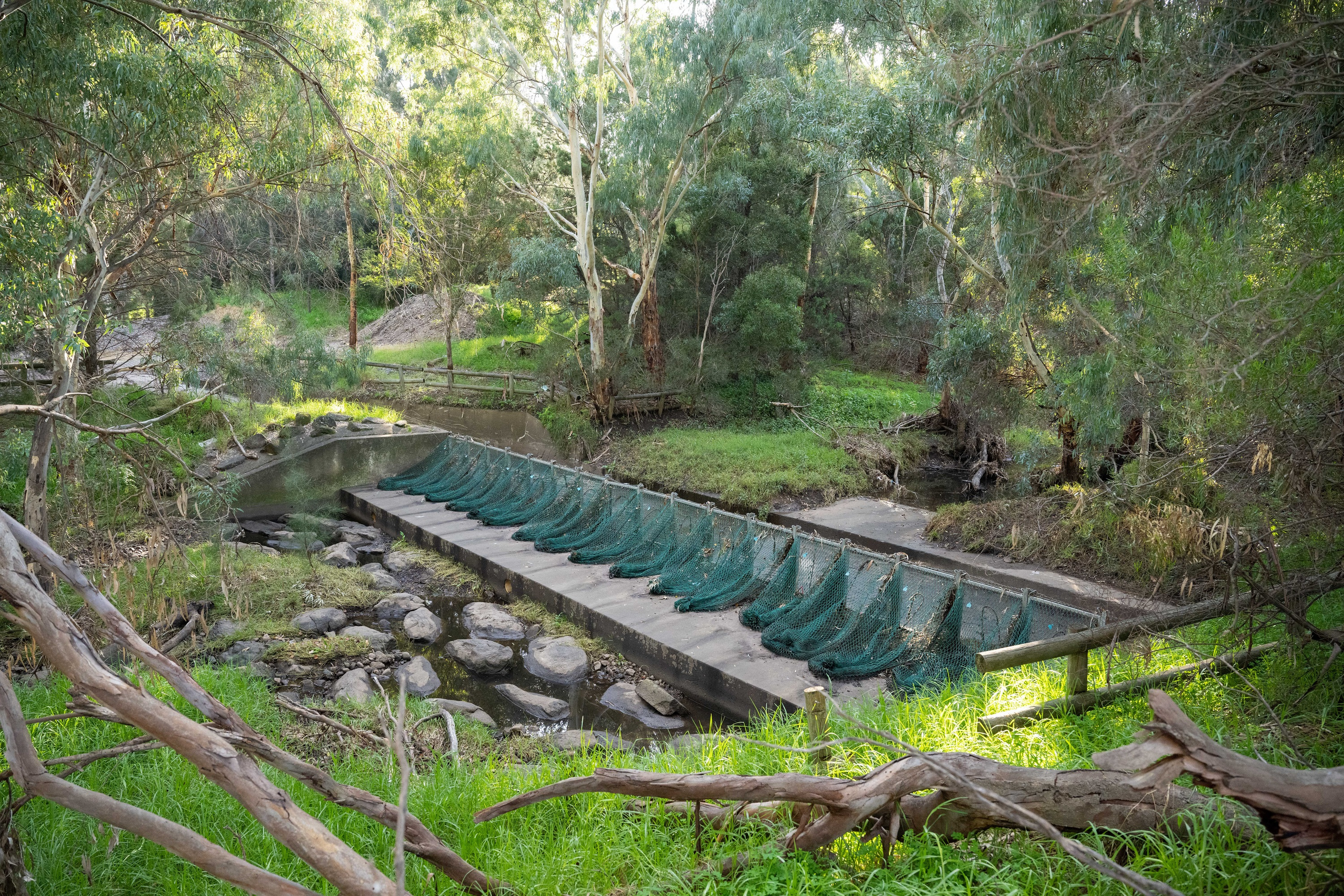Keeping rubbish out of the river has huge benefits for water quality. Find out how litter gets into the Torrens, what is being done, and what you can do to help.

The River Torrens / Karrawirra Pari is an important place for Adelaidians, and a vital system for local wildlife and plants.
We undertake a number of actions with our partners to look after the river, but we can all play a part in helping to make it even better.
One action we can all take is keeping rubbish out of the river. Discover how we get litter out of the system, and what you can do to help.
How does rubbish enter the river?
While some rubbish makes its way directly from banks or nearby areas into the river, did you know that a lot of litter can come from stormwater?
When it rains, water collects rubbish and other pollutants from roofs, streets, footpaths and driveways. That rainwater run-off – or stormwater – is unfiltered, and everything it picks up is carried into our waterways.
What’s being done to manage litter in the River Torrens?
Lots is being done to reduce the amount of litter and pollutants in the river.
Trash racks and floating booms that collect rubbish
We manage 6 trash racks, also known as ‘gross pollutant traps’, which help contain rubbish that ends up in the river. These structures have nets that trap litter build-up. We then arrange disposal of the contents of these nets out of the system. These trash racks are regularly monitored and cleaned, especially in times of high rainfall when more stormwater is entering the system.
You can see net-style traps at a number of the creeks that feed into the River Torrens / Karrawirra Pari.

We also operate floating booms, another way to collect litter and get it out of the river. If you imagine a bendy boom gate suspended on water, that should give you a pretty good idea of what a floating boom looks like. It directs organic matter, sediment and rubbish into a single access point, so then it is easier for us to collect and dispose of this litter.
Each year the combination of the trash racks, plus the floating boom, collects enough leaves, twigs, sediment and rubbish to cover the playing field at Adelaide Oval!
To improve the health of the river, we also work with local councils, government agencies and the community on a range of projects both along the river and across the broader catchment that feeds into it.
For example, the River Torrens Recovery Project removes woody weeds and pest fish species, while also revegetating the banks of the river.
Weed removal and revegetation
To improve the health of the river, we’ve worked with local councils, government agencies and the community on a range of projects over the last 20 years, both along the river and across the broader catchment that feeds into it.
For example, more than a million dollars has been spent as part of the River Torrens Recovery Project removing woody weeds and the pest fish species: European carp, while also revegetating the banks of the river. This project is an ongoing collaborative effort.

Is the river’s water quality getting better?
The River Torrens / Karrawirra Pari has improved in water quality in recent years. Over the past couple of decades, councils, government, Kaurna and the community have worked together to transform the river through weed removal, revegetation, stabilising riverbanks, stormwater management and removing large volumes of pesky European carp.
Signs that the river has improved include diverse plant life, more birds, mammals, reptiles and amphibians, and water bugs, which all indicate water health.

We also have a number of projects along the River Torrens / Karrawirra Pari, which have either helped to rehabilitate the system or help demonstrate improvements made. The Breakout Creek redevelopment is one of our more recent projects, transforming a stretch of river from an artificial channel into a more natural flowing and healthy creek.
Our regular fish monitoring along the length of the river has also shown self-sustaining populations of rare native fish such as freshwater catfish, lampreys and eels.
And, our independent scoping study released last year even showed that habitat quality is favourable in several areas of the river for a potential platypus reintroduction.
Of course, we will continue to improve and maintain the river, alongside our partners and the community.

How can I help?
Stopping rubbish and other pollutants before they reach our waterways is the key to a healthy and clean river – and everyone can play a part in this.
Soaps, chemicals and other home and garden items can negatively impact plants, animals and water quality. Here’s how to keep pollutants like these out of our waterways:
- Avoid or minimise the use of fertilisers, herbicides, and pesticides.
- Wash your car or equipment on a grassy or gravel area to avoid soaps (even the biodegradable ones) ending up in the gutter.
- Cover any exposed piles of construction material or soil.
- Collect any fallen leaves and put them in the green bin.
- Pick up rubbish on the street and in parks where safe to do so.
- Choose local native species for your garden, as they naturally filter water.
If you have a waterway on or near your property, there are more ways you can help keep our waterways clean too.

Learn more about the River Torrens / Karrawirra Pari
Get to know Adelaide’s most prominent river, which is more than 460 times the length of Adelaide Oval and the soul of our city.